Wild and Cultivated Pleasures
Mythbusting
Before going any further, let me bust a myth that still might be having some traction: Late summer and fall allergies are not caused by goldenrod (Solidago spp.). 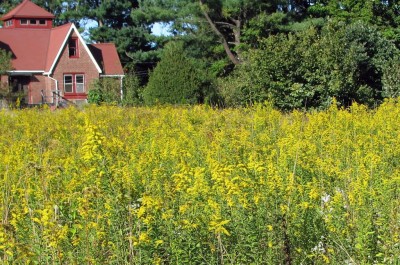 Goldenrod gets the blame for its showy, yellow blossoms during this allergy season. But the true culprit is ragweed, which goes unnoticed because it bears only small, green flowers.
Goldenrod gets the blame for its showy, yellow blossoms during this allergy season. But the true culprit is ragweed, which goes unnoticed because it bears only small, green flowers.
It makes sense that the pollen of a showy flower would not cause allergies. Showy flowers put on their show to attract insect (and, in some cases, bird or bat) pollinators. Wind can’t carry their heavy, sometimes sticky, pollen.
Pollen that causes allergies wafts around in the wind. Wind-pollinated flowers (euphoniously called “anemophilous” flowers) don’t need to attract animal pollinators.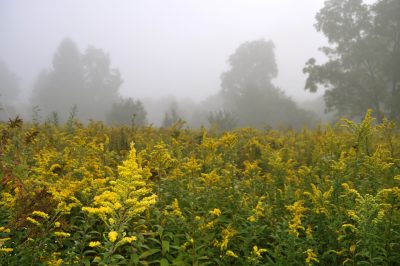
And Now, Enjoy the Flowers
With that said, I can safely revel in the rich golden yellow with which goldenrod’s flowers are painting sunny hillsides and fields this year. Goldenrod’s beauty comes as no surprise once you realize that it comes from a very good family, the Daisy Family, Asteraceae. Sunflower, black-eyed-Susan, coneflower — and thistles and dandelion — are among its kin.
Confirm goldenrod’s heritage with a magnifier trained on one of its small florets. Flowers in the Daisy Family are made up of one or both of two kinds of florets. Each disk floret is a relatively small, symmetrical tube of fused petals. Petals of the other kind of floret, ray floret, are also fused, but asymmetrically into one long, strap-shaped petal. The head of a sunflower (most varieties) is mostly disc florets circumscribed by prominently-petaled ray florets that create that decorative ring around the head. At the other extreme is a dandelion flower, all of whose florets are ray flowers, resulting in a powderpuff of yellow petals. Most species of goldenrod have flowers like those of sunflower — but you have to look closely. (For more about plant families, see my new book The Ever Curious Gardener: Using a Little Natural Science for a Lot Better Garden.)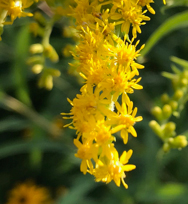
Meadow Reclamation
My meadow — or hayfield, or whatever you want to call it — was once replete with goldenrod. And before that, pale lilac flowers of wild bergamot (Monarda fistulas) blanketed much of the field. And before that, the field was grass, kept that way by the previous landowner’s regular mowing throughout the season.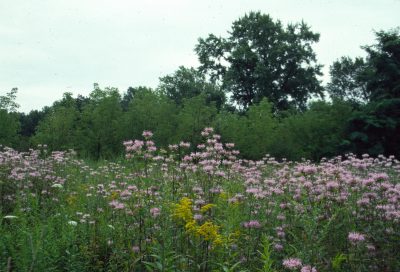
Sadly, for me, goldenrod has lost its prominence in my field, replaced by coarser and more woody plants such as poison ivy, sumac, and wild blackberries. My once-a-year mowing has kept these plants from totally getting control of the landscape. Without mowing, the field would, in time, become forest.
This spring, I decided to try to reclaim the field and, I hope, invite back some goldenrod and wild bergamot. My modus operandi is to mow regularly. In previous years, the wide paths I would mow and maintain mowed through one season would reflect that mowing for at least the following season or two or three. Mostly, it was the grasses, the only plants that can tolerate frequent mowing, that came into prominence.
I expect plants such as goldenrods and wild bergamot will gain footholds beginning next year and increasingly so in years to follow — until, of course, poison ivy and friends start to move in again.
Landscapes aren’t static, and changes come relatively quickly, not always predictably as the changes are seasoned with each year’s and more long term weather and climate patterns.
Wild Aromas, Cultivated Flavors
Wild grapes are also prominent in the wild landscape this year, mostly from the jasmine-like aroma with which they perfume the air. Here in eastern U.S. and Canada, fox grape (Vitis labrusca) is a prominent wild grape.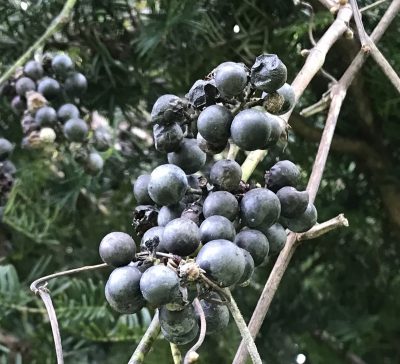
The variety Concord typifies the flavor and texture of fox grapes. Why “fox?” No one knows for sure, but around 1880, the botanist William Bartram suggested that the epithet was applied to this grape because of the “strong, rancid smell of its ripe fruit, very like the effluvia from the body of a fox.” Others suggested the epithet came about because foxes ate the grapes, or because the leaves resembled fox tracks.
Disease resistance and cold tolerance of fox grapes helped save the French wine industry a century and a half ago, when these grapes were hybridized with the traditional, disease-prone wine grapes (V. vinifera) of Europe. Thousands of hybrids now exist all along the spectrum from vinifera to fox as far as flavor, disease resistance, cold tolerance, and other characteristics.
I’m enjoying the aroma of the wild grapes but most appreciate the flavors of Vanessa, Somerset Seedless, Alden, Edelweiss, and my other cultivated varieties.
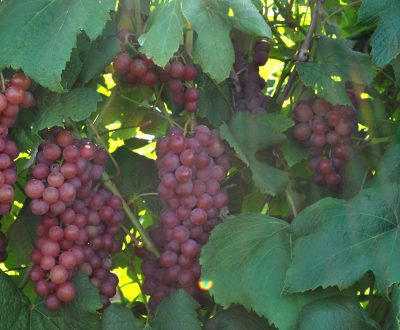
Vanessa grapes

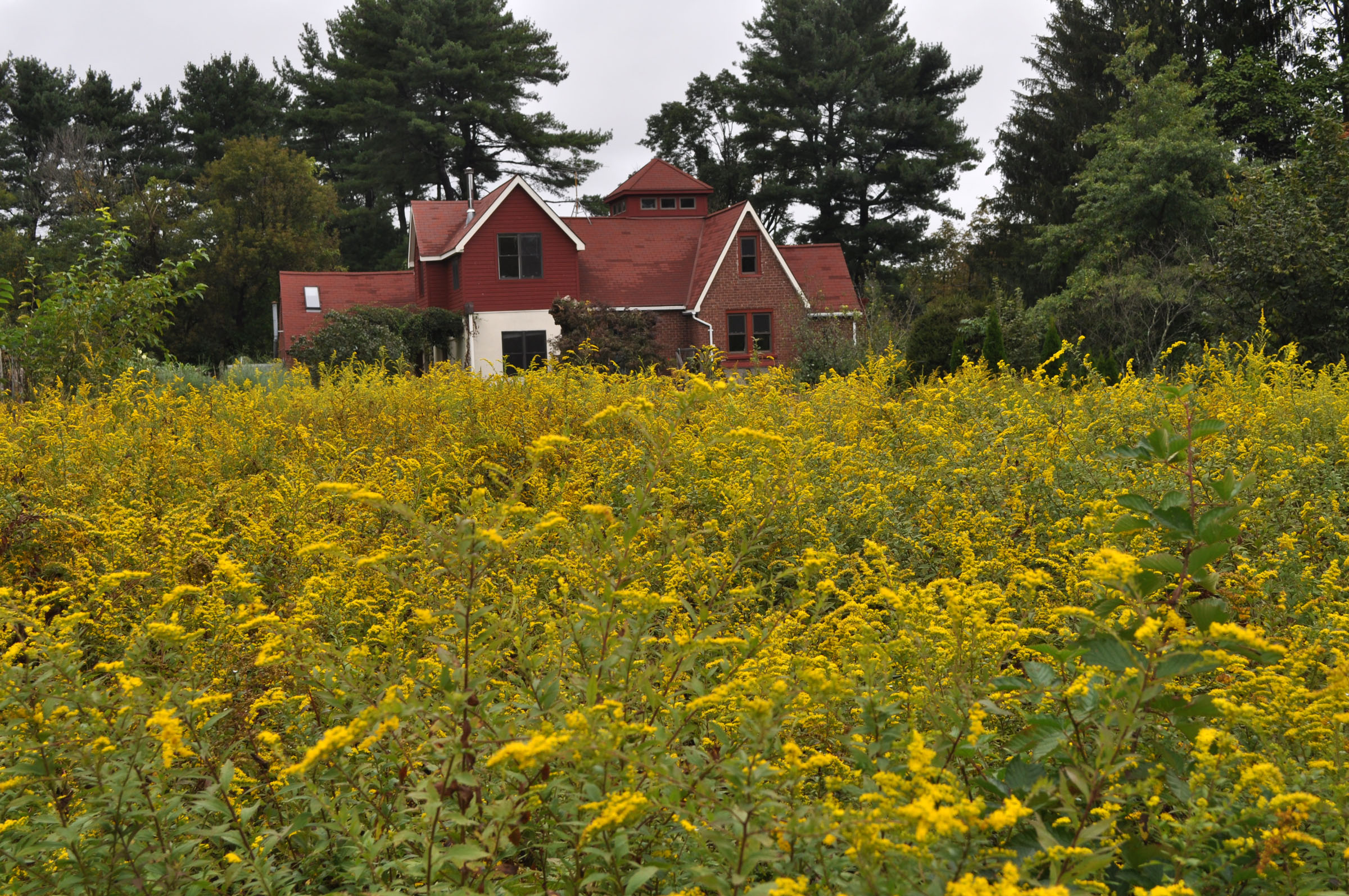
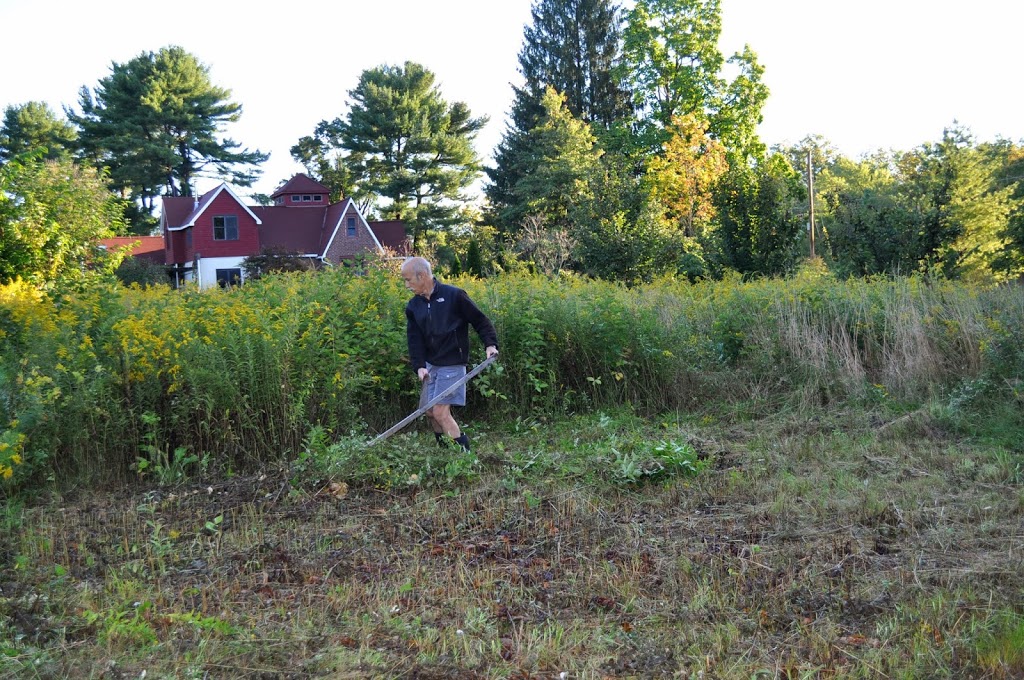
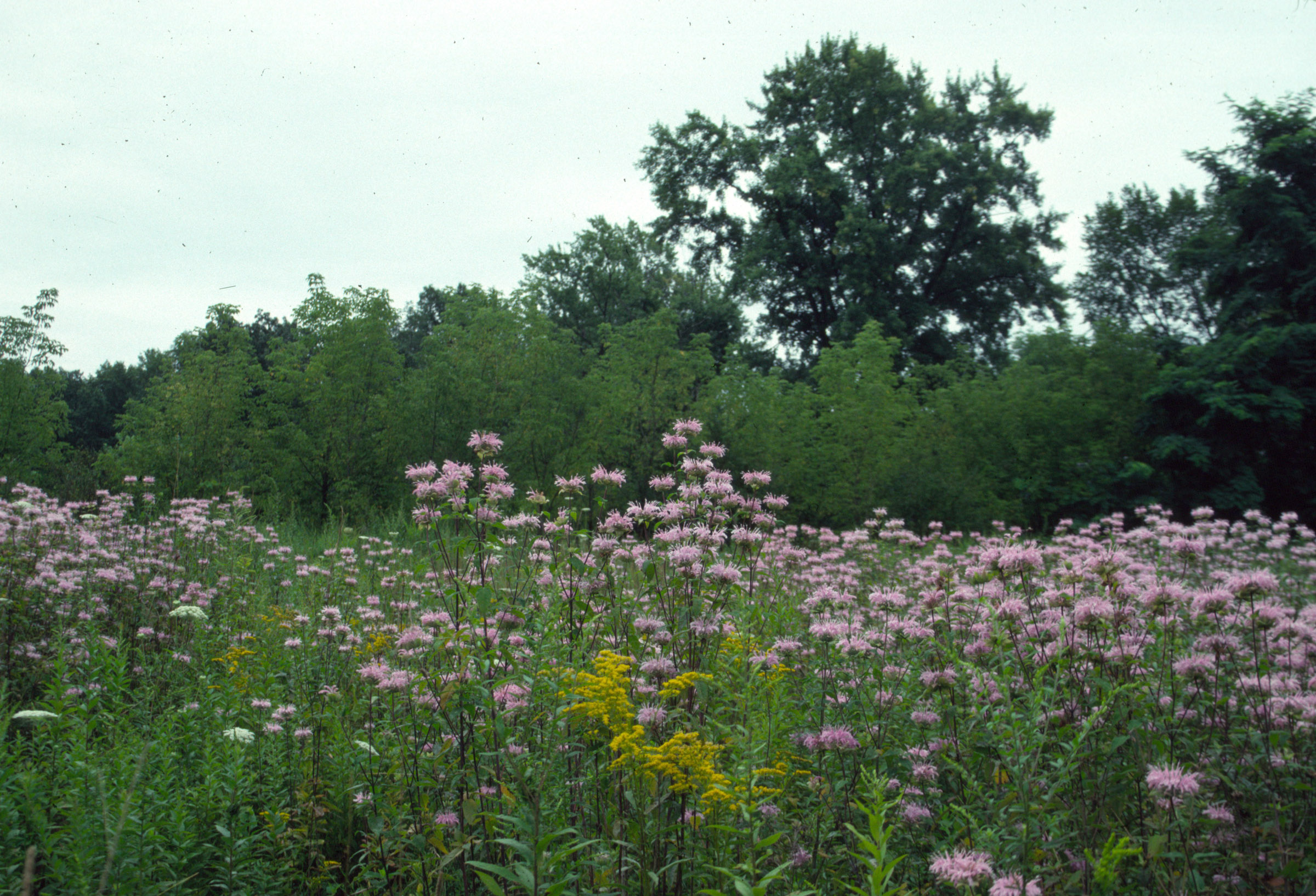

We have a pasture next to our home that was once pasture land for dairy cows. It has a wonderful sweet small from the grasses but poison ivy has taken a firm hold in one section. Do you have a good way to get rid of it and to keep it out? If I mow a few times a year will that deter the poison ivy? I am concerned I am spreading it when I mow using a tow behind mower on our tractor.
Try what I did: Mowing for one season as if it were a lawn. It won’t spread the poison ivy; p.i. spreads by underground runners or seeds.
Thank you for sharing this newsletter with us. Quite enjoyable.
Harry C Tabak
On our new property we have lovely golden rod! In the woods we have zig zag goldenrod, too. I would love to incorporated some bergmot in the “meadowy” section. Also in that section is a beautiful clot of Spikenard! And to top it all off, showy poke berry. I love a wild landscape! I hope your goldenrod is prolific next year. One of my favorite things is to see how many different pollinators I can spy on one of those sprigs.
Thank you I will try this!
I have a large field – a meadow – that I mow once a year. It is ablaze with Goldenrod. Keeping that area “natural” allows all manner of native wildflowers to flourish (along with some non-natives too I suppose). This gives me a rich repository of beneficial insects, reptiles, and amphibians in addition to the plants. I have heard that the best way to eradicate poison ivy is to pasture horses for a year in the area. I hope this is of help to someone: I know the woes of being overrun with p.i.
Perhaps goats would be better; they tread more lightly. I’ll wait to see how the mowing worked.